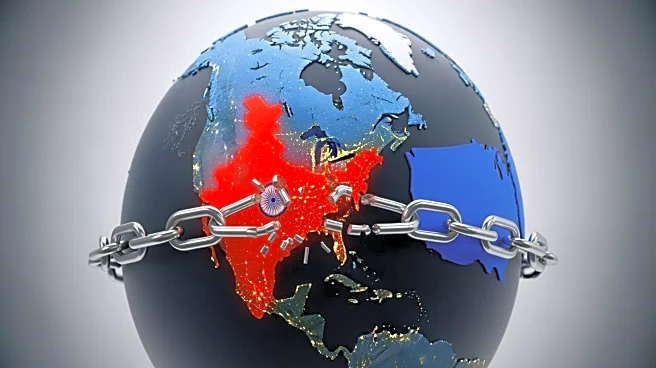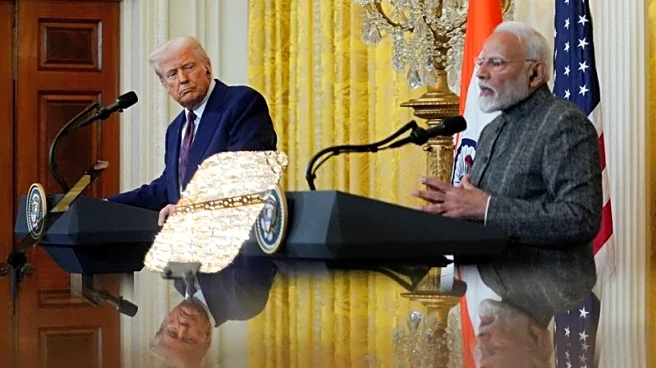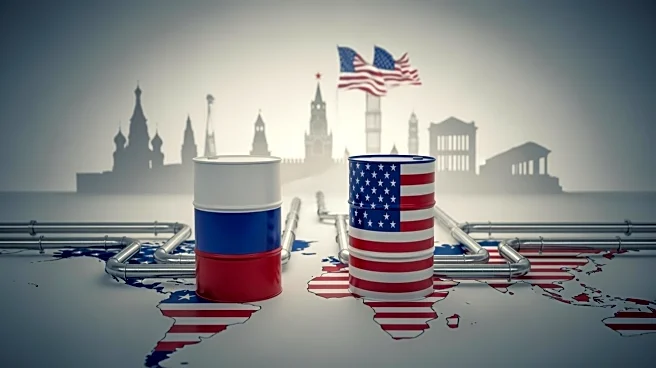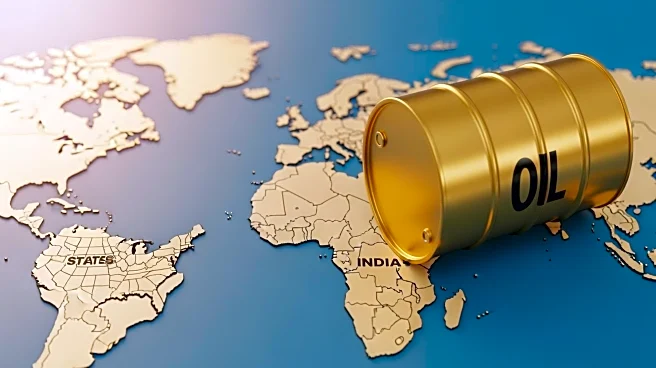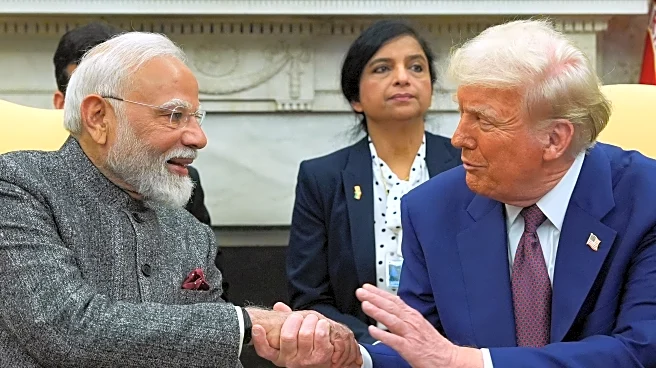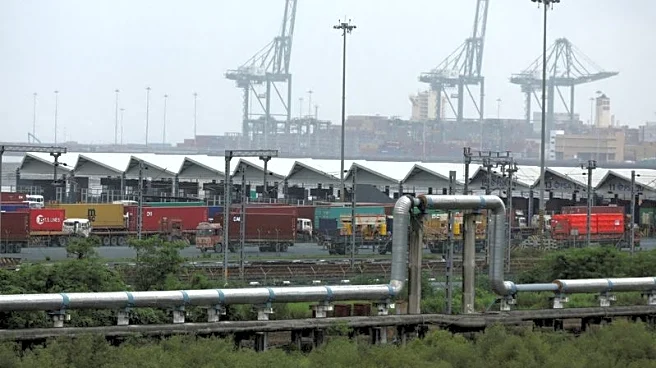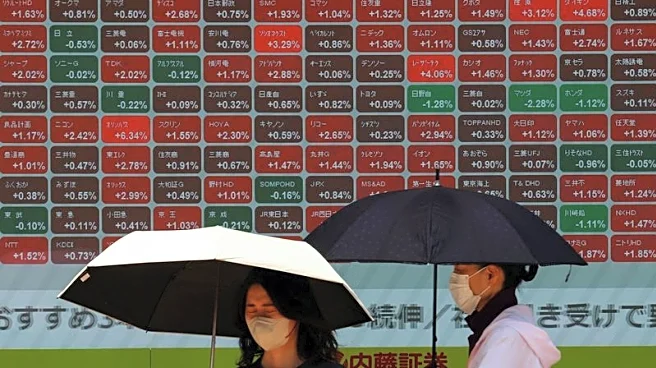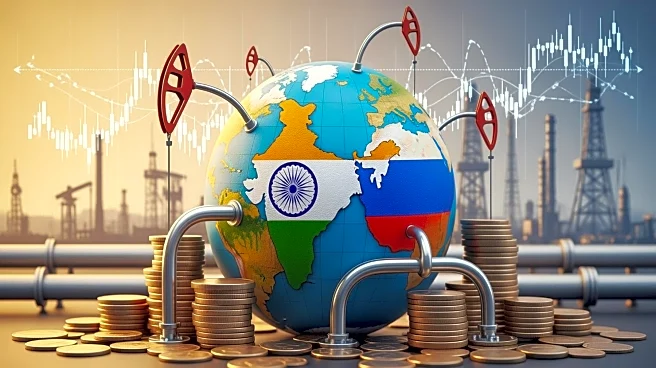What's Happening?
India's exports to the United States have experienced a sharp decline due to the implementation of President Trump's 50% tariffs on Indian goods. These tariffs, which began on August 27, have resulted in a 20% drop in exports for September and a nearly
40% decrease over the past four months. The tariffs include a 25% penalty related to India's continued purchase of Russian oil. The sectors most affected by these tariffs are labor-intensive industries such as textiles, gems and jewelry, engineering goods, and chemicals. The decline in exports has contributed to India's trade deficit, which reached a 13-month high of $32.15 billion in September. Despite the reduction in exports to the U.S., India has seen improved trade relations with countries like the UAE and China. Trade negotiations between India and the U.S. have resumed, with an Indian delegation currently in the U.S. for talks.
Why It's Important?
The imposition of tariffs by President Trump has significant implications for both the U.S. and Indian economies. For India, the decline in exports to its largest foreign market exacerbates its trade deficit, impacting economic stability and growth. The affected sectors, which are labor-intensive, may face job losses and reduced production, affecting millions of workers. For the U.S., these tariffs are part of a broader strategy to exert economic pressure on countries like Russia, but they also risk straining relations with India, a key trading partner. The ongoing trade negotiations are crucial for resolving these issues and potentially expanding bilateral trade, which was valued at $190 billion in 2024, with a target to increase to $500 billion.
What's Next?
Negotiations between India and the U.S. are ongoing, with the aim of concluding a trade agreement by next month. Key issues remain, particularly regarding access to India's agriculture and dairy sectors, which India has protected due to concerns over food security and the livelihoods of small farmers. The outcome of these negotiations will be pivotal in determining the future of trade relations between the two countries. Additionally, India's agreement to stop buying Russian oil, as stated by President Trump, could influence geopolitical dynamics and energy cooperation between the U.S. and India.
Beyond the Headlines
The tariffs and subsequent trade negotiations highlight the complex interplay between economic policy and international relations. The U.S.'s approach to using tariffs as a tool for geopolitical influence, particularly in relation to Russia, underscores the broader implications of trade policies on global diplomacy. Furthermore, the protection of India's agricultural sector reflects deeper cultural and economic priorities that may resist external pressures, emphasizing the need for nuanced and respectful negotiation strategies.
